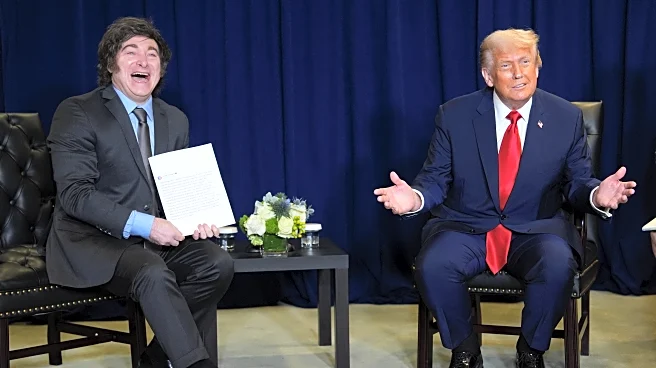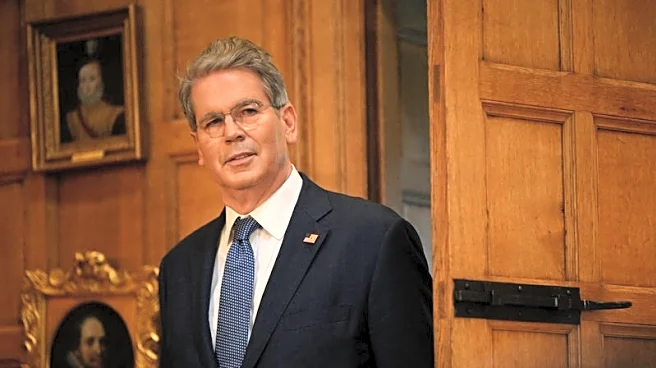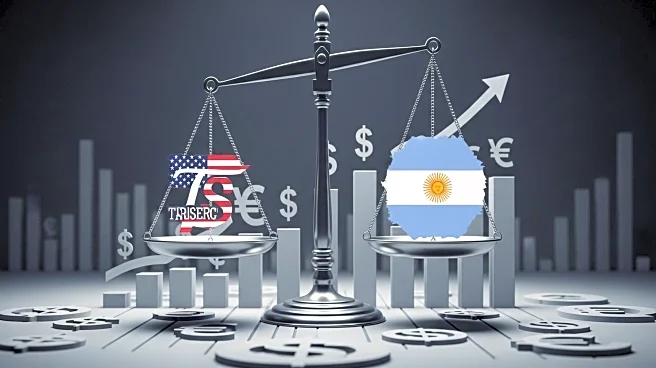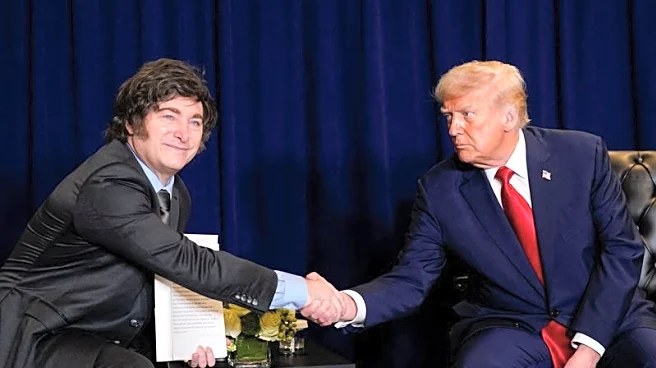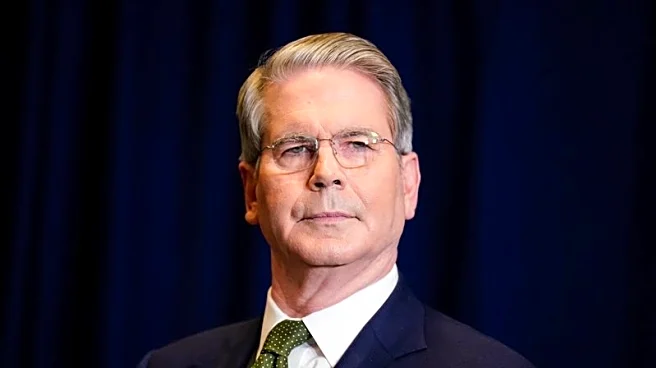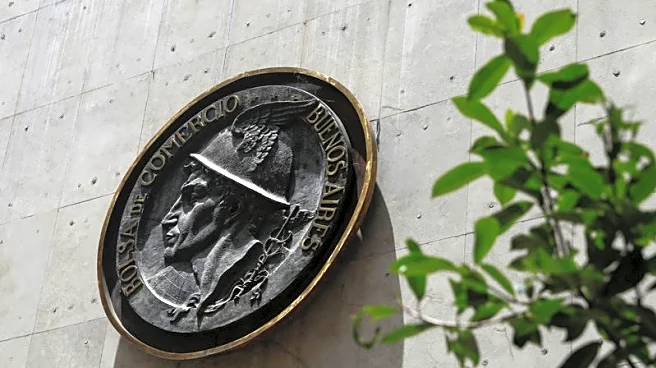What is the story about?
What's Happening?
The U.S. Department of the Treasury is in negotiations with Argentina's central bank to establish a $20 billion swap line aimed at supporting the country's financial stability. Treasury Secretary Scott Bessent announced the potential for direct lending through currency swaps and bond purchases following a meeting between President Trump and Argentine President Javier Milei. This move comes in response to Argentina's recent economic turmoil, marked by a sharp sell-off of the Argentine peso and a depletion of the country's hard-currency reserves. The Argentine government is seeking U.S. support to prevent further depreciation of its currency, which could lead to heightened inflation expectations and economic instability.
Why It's Important?
The U.S. Treasury's intervention is significant as it represents a direct involvement in stabilizing a foreign economy, which is not typically undertaken unless the country is deemed systemically important. Argentina's economic challenges, including high inflation and a stagnant economy, have prompted the need for external support. The U.S. assistance could bolster investor confidence and stabilize Argentina's financial markets, potentially averting a deeper economic crisis. This action also underscores the strategic relationship between the U.S. and Argentina, with potential implications for regional economic stability and U.S. influence in Latin America.
What's Next?
If the negotiations are successful, the U.S. Treasury may proceed with the swap line and bond purchases, providing immediate financial relief to Argentina. The outcome of Argentina's upcoming midterm congressional elections could further influence the political and economic landscape, affecting the government's ability to implement necessary reforms. The U.S. may also seek payment guarantees or conditions from Argentina, leveraging its natural resources as part of the transactional approach favored by President Trump.
Beyond the Headlines
The U.S. Treasury's involvement through the Exchange Stabilization Fund highlights the historical role of this fund in providing crisis funding to Latin American countries. The fund's use in this context reflects a shift from its original purpose of affecting the price of the dollar to providing short-term loans to stabilize foreign economies. This development may set a precedent for future U.S. interventions in global financial crises, particularly in regions with strategic economic or political importance.
AI Generated Content
Do you find this article useful?



